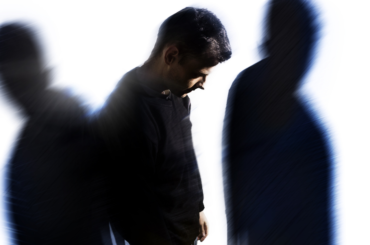Bipolar disorder is a mental health condition that causes a person severe changes in moods and energy levels. We all go through ups and downs of mood and energy throughout our day. However, if these mood swings start interfering with a person’s routine activities, it is to be taken seriously.
The mood swings of a person with bipolar disorder can vary from extreme happiness to depression in seconds. It gets very arduous for such people to manage their chores, relationships, and office duties. A cure for bipolar disease is not known, but many treatment options are available.
Bipolar Disorder Symptoms
The symptoms of bipolar disorder in a person ranges from high to low. The three main symptoms that occur with bipolar are mania, hypomania, and depression.
Mania
In mania, a person feels emotionally high. They feel excited, impulsive, and full of energy. People may even engage in behaviors like spending sprees or unprotected sex.
Hypomania
Hypomania is like mania, but it’s not as severe as mania. Hypomania does not intrude on the normal day-to-day activities of a person. In an episode of Hypomania, a person may experience mood changes like extreme sadness, hopelessness, lack of energy, little or no sleep.
In an extreme episode of hypomania, a person may get suicidal thoughts.
Depression
Depression is a side-effect of bipolar disorder. It leads to sadness and despair. The person might lose interest in the activities they once liked.
Types of Bipolar Disorder
Bipolar disorder is divided into three types. These are categorized by the pattern of episodes of mania and depression. The treatment may vary according to the type of disorder.
- Bipolar I disorder
Bipolar-I disorder is diagnosed when the episodes of mania last at least seven days. These episodes sometimes consist of psychotic features. A person might get to a level of harming oneself or others. In such cases, the person needs immediate hospitalization. Many times, the manic episodes get accompanied by depressive features.
- Bipolar II disorder
Bipolar II disorder has nothing to do with manic episodes. This disorder involves recurring episodes of depression and hypomania. Hypomania is milder than mania.
Depressive episodes are crucial in this form of the disorder. Depressive episodes are what distinguish this type of disorder from Bipolar-I disorder. Some commonly seen symptoms of this disorder include Insomnia, emotional traumas, fatigue, and suicidal thoughts.
- Cyclothymic disorder
Cyclothymic disorder is a mild form of bipolar disorder. A bipolar disorder like cyclothymia consists of cyclical mood swings. The mood swings are not as extreme in this condition as compared to bipolar disorder I and II.
This type of bipolar disorder is generally seen in adolescence. Such people might seem moody and difficult for others. Even though its symptoms are mild, it needs treatment on time. If a cyclothymic disorder is not treated on time, it might increase the risk of developing bipolar disorder.

Causes of Bipolar Disorder
Bipolar disorder is a common mental health condition, yet it isn’t clear what causes some people to develop it. The common causes of bipolar disorder include:
- Genes
If your parent or siblings have experienced the disorder, you are more likely to develop the condition. Heredity remains one of the common causes of bipolar disorder.
- Environmental factors
External factors influence the mental conditions of people in various ways. Outside factors, like extreme stress, emotional or physical traumas, or illnesses can also cause bipolar disorder in a person.
Bipolar Disorder Treatment
Many treatments are available to help a person manage the signs and symptoms of bipolar disorder. It can include medications, therapies, or a combination of both.
- Medications: Once you feel or witness the symptoms in yourself for the disease, you should get yourself diagnosed immediately. Upon confirmation, your physician might prescribe you meds to help you manage your symptoms better.
- Cognitive Behavioural Therapy: It is talk therapy and one of the most effective ways to help people. A therapist will talk to you about how you feel and how you should manage your emotions efficiently. Counselors come up with techniques to cope up with the illness in a positive manner.
- Interpersonal Therapy: As the name suggests, this therapy brings lifestyle changes to a person’s life. This therapy focuses on regulating daily habits including eating, sleeping, exercising, etc. If a person learns to manage these activities effectively, they can manage the disorder.
- Psychoeducation: Psychoeducation is a type of treatment where you and your loved ones are taught more about the disorder. The aim of the therapy is to make you understand what you are going through and how to manage your symptoms.
- Other treatments: Your doctor might help you manage your signs and disorder by other treatments. These treatments may include ECT, acupuncture, sleep medications, or other supplements.
Final Thoughts
Living with bipolar disorder can be very challenging. It is a very common condition and can easily be diagnosed. People must work with patience and positivity to manage the mood swings it brings. Various treatments are easily accessible for the same, and you can maintain a regular and happy life ahead.





